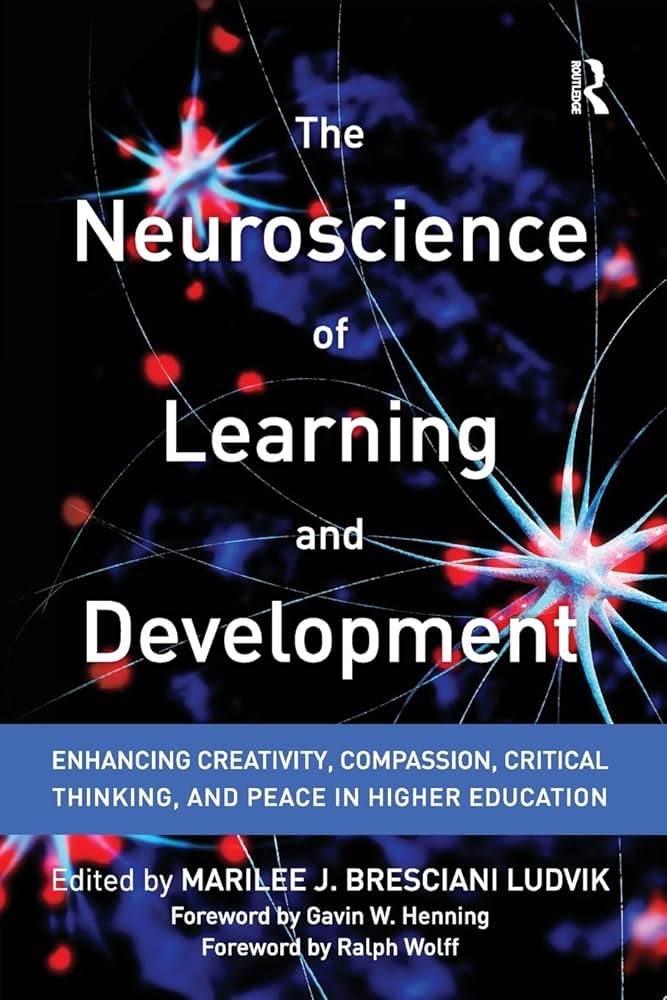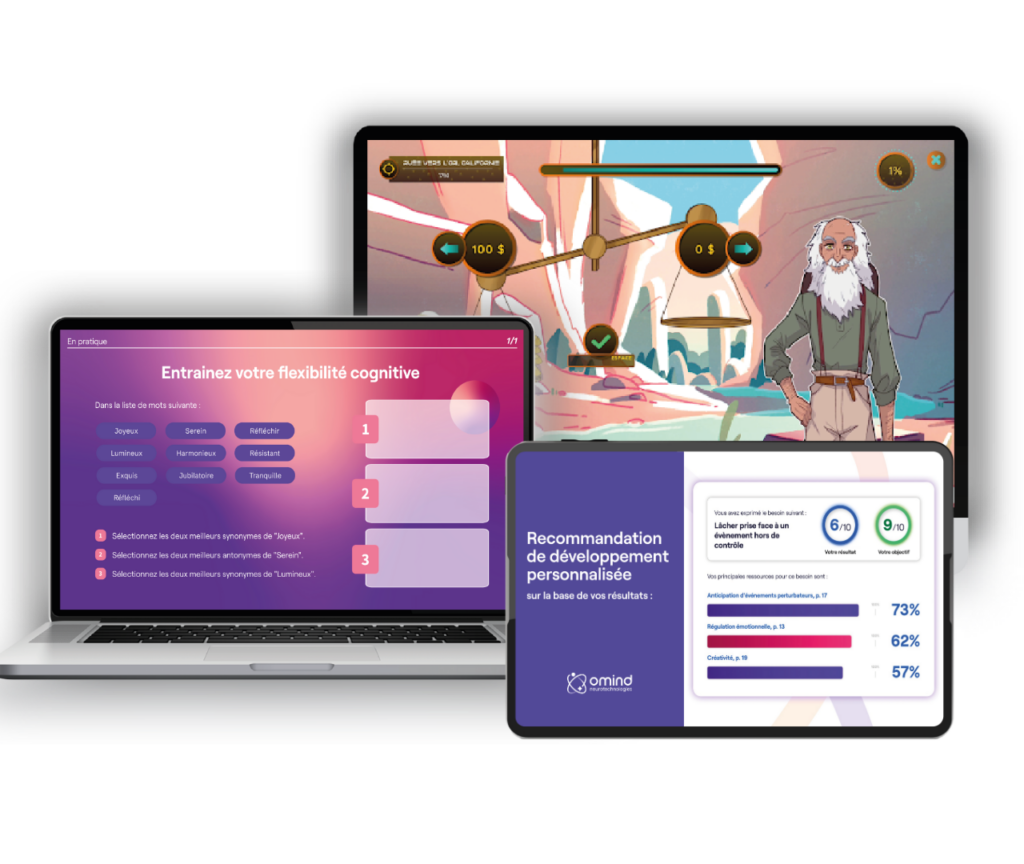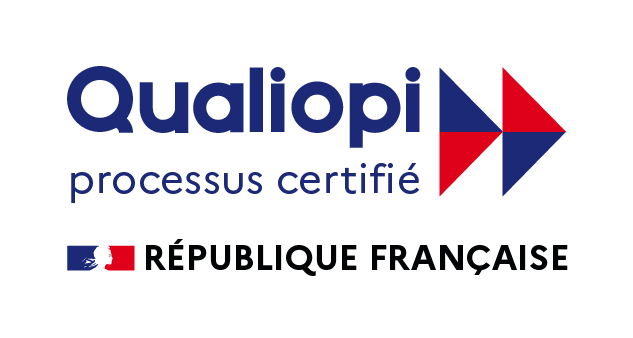The rapid evolution of skills requirements is forcing companies to rethink their learning strategies. It’s no longer enough to multiply training courses: they need to be effective and aligned with the way the brain learns.
It is in this context that neuropedagogy comes into play. Neuropedagogy makes it possible to design more personalized and stimulating learning pathsadapted to learners’ cognitive functioning, to maximize engagement and learning efficiency.
What are the scientifically proven best practices for developing truly effective training courses, particularly in soft skills? Find out in this article!
1- What is neuropedagogy?
Neuropedagogy is an educational approach based on advances in neuroscience, the science that studies how the brain works. Its main aim is to to improve the effectiveness of learning by adjusting teaching methods to the brain’s natural brain mechanisms. This means taking into account the way the brain assimilates, processes and retains information. Researchers such as Stanislas Dehaene² have identified fundamental principles for optimal, sustainable learning, including attention, active engagement, spaced repetition and the consolidation of knowledge in memory.
Neuro-pedagogy is based on brain brain plasticity the brain’s ability to reorganize itself and create new connections. Think of your brain as a muscle: the more you work it intelligently, the better it performs. For example, playing educational games or receiving feedback regularly helps your brain retain information for longer, as these methods stimulate different parts of the brain.
In“The Neurosciences of Learning & Development” (2016), the bible of neuropedagogy applied to behavioral skills, Bresciani Ludvik points out that emotions play a fundamental role in learning, as they facilitate the retention and comprehension of information. She explains, for example, that positive such as curiosity and enthusiasm activate areas of the brain linked to motivation and memory. Ludvik also mentions that creating learning experiences that generate a sense of accomplishment helps to strengthen consolidation of skills, particularly in areas such as interpersonal communication.

2- Why use neuropedagogy to transform your corporate training courses?
The integration of neuropedagogy into training strategies is now a must, given the knowledge available on the subject. It is estimated that the cumulative effects of each scientifically-proven good practice demonstrate that training has a major impact on learning and the ability to develop new behaviors in a given situation, to the order of +200% compared with conventional training. Some examples of proven effects:
Active learner engagement : if there’s one proven fact, it’s that an active posture on the part of learners has an impact on the impact of a training course, on the order of +12% à +40%¹. By switching to more inductive and experiential teaching methods, the results are there for all to see. Another interesting possibility is to rely on a new generation of tools such as immersive games, role-playing simulations and peer-to-peer reflection on practices in real-life situations. Video games, for example, trigger the release of dopamine in the reward circuit, boosting motivation and memorization. A study conducted by Harvard University (2019) revealed that students using interactive learning environments improved their performance by 25 % on average compared with those taking traditional courses². At Omind, similar results have been observed with a 90% completion rate in programs, even online, demonstrating the commitment generated by this scientifically validated method.
- Improved information retention : one of the main strengths of neuropedagogy is its impact on long-term memory. Thanks to techniques such as spaced repetition and active consolidation of knowledge, learners are better able to retain information over the long term. Unlike conventional approaches, which often rely on linear repetition and the accumulation of information, neuropedagogy enables learning to be consolidated gradually, thus avoiding cognitive overload. According to a study conducted by Journal of Cognitive Neuroscience, people who learn with these neuroscientific techniques retain 23 % more information than those using conventional methods³.
- Increase productivity by adapting to individual learning styles Neuro-pedagogy enables companies to tailor their training courses to the exact needs of each individual learner, as if each employee were receiving tailor-made training adapted to the way his or her brain works. This helps employees better understand and retain information, and reduces their stress levels. Result: an increase in 22 % of team productivity (Deloitte, 2020)⁴. What’s more, it prepares employees to better handle complex situations and collaborate more effectively.
Would you like to find out how Neuropedagogy can boost your training courses? Watch the replay of our webinar!
3- Essential practices for integrating neuropedagogy into your training strategies
The integration of neuropedagogy into training strategies is based on specific techniques and practical tools that maximize learning effectiveness by drawing on the way the brain works:
-
Self-reflection, the alpha and omega: Are you hesitating to integrate an individual reflection module into your training courses for managers, sales representatives or future executives? Think no further: integrating an individual reflection module into your training courses is an effective way of empowering learners. It enables them to take a step back from their actions, identify concrete areas for improvement, and adjust their behavior directly in line with their professional objectives. In practice, this translates into better application of acquired skills, and specialized studies in psychology show that these moments of reflection increase the likelihood of learning being put into practice by +25 % à +35%⁵. As a corollary, making your progress explicit for yourself, for example in a journal, or for others, is a significant boost to this process.
-
Gamification & “learning by doing”: serious games are powerful tools for reinforcing learners’ active engagement by placing them in interactive, immersive scenarios. For example, platforms such as Kahoot! animate training courses via interactive quizzes, whileOmind uses scientifically validated serious games to reproduce the behavioral reactions encountered in complex professional situations. These tools promote awareness of behaviors to be improved, and enable personalized learning based on learning by doing – learning by doing. Unlike passive learning methods, these games enable learners to play an active role in their training, increasing motivation and knowledge retention.
-
Adaptive and personalized learning with artificial intelligence: the use of artificial intelligence to personalize learning paths according to the needs and progress of each employee. Tools such as from Omind use AI algorithms that automatically adapt training program content according to learners’ results, facilitating personalized learning and engagement.
-
Instant and continuous feedback: feedback is an essential element in the neuro-pedagogical approach. Providing real-time feedback allows learners to quickly correct mistakes and reinforce acquired knowledge. Platforms such as Talentsoft offer integrated assessment tools that enable trainers to track employees’ progress and provide instant feedback, promoting continuous improvement.
-
Integrating emotions into learning: stress management stress management is essential for improving cognitive performance and fostering better learning. Neuropedagogy integrates techniques to reduce stress and improve concentration, such as guided meditation or cardiac coherence. E-learning modules on energy management and emotional intelligence can be integrated into training programs to help employees better manage stress and be more receptive to new knowledge.
- Spaced repetition: spaced repetition is one of the most effective techniques for promoting long-term retention. long-term retention. It involves spreading revisions over longer periods, rather than concentrating all learning in a single session. This method allows you to consolidate your knowledge gradually, strengthening your neural connections with each revision.
Discover our neuropedagogical modules to integrate directly into your programs or tenders.

In short, integrating neuropedagogy into a training strategy is based on the use of techniques that stimulate engagement, promote long-term retention and enable personalized learning. With the right tools, companies can optimize their training programs and improve employee performance.
¹ Freeman, S., et al. (2014). “Active learning increases student performance in science, engineering, and mathematics.” PNAS
Roediger et. al. (2011). “The critical role of retrieval practice in long-term retention.” Trends in Cognitive Sciences
² Deslauriers, L., McCarty, L. S., Miller, K., Callaghan, K., & Kestin, G. (2019). Measuring actual learning versus feeling of learning in response to being actively engaged in the classroom. Proceedings of the National Academy of Sciences, 116(39), 19251-19257.
³ Journal of Cognitive Neuroscience. (2019). Impact of Neuroscience-Based Learning on Long-Term Retention: A Comparative Study. Journal of Cognitive Neuroscience, 31(4), 672-685.
⁴ Deloitte (2020). Corporate Learning Strategy and Impact Report. https://www2.deloitte.com
⁵ Grant, A. et al. (2016). The Power of Self-Reflection: Reflection Improves Problem Solving. Personality and Social Psychology Bulletin. Seibert, S. E. et al. (2017). Feedback Seeking, Reflection, and Skill Development. Journal of Applied Psychology


